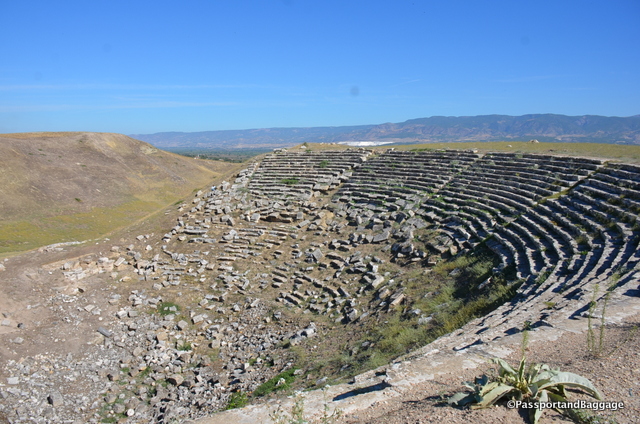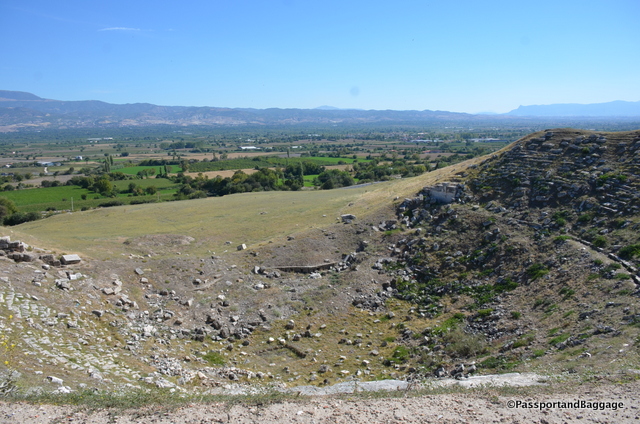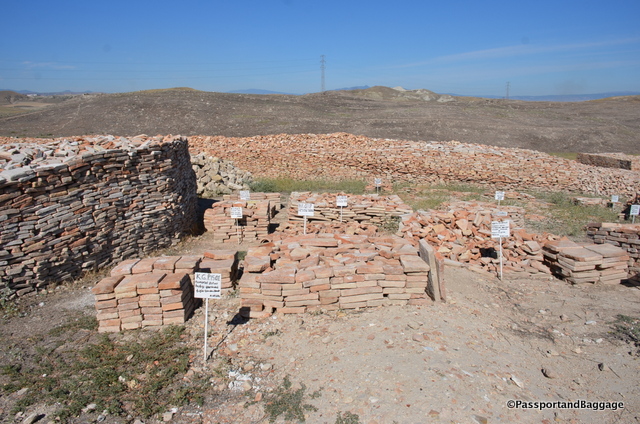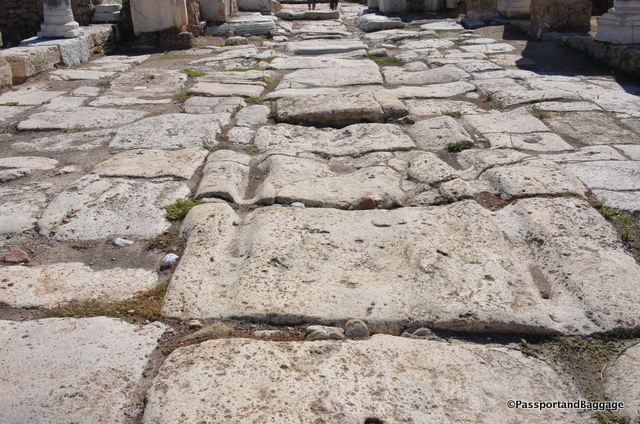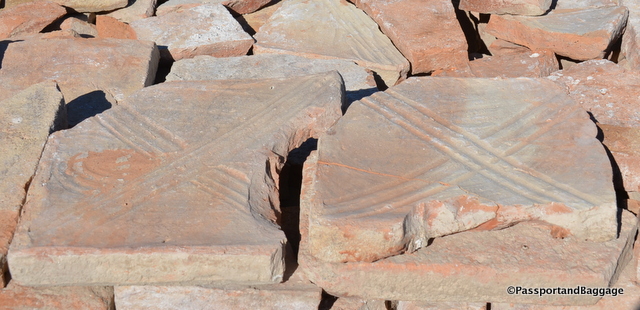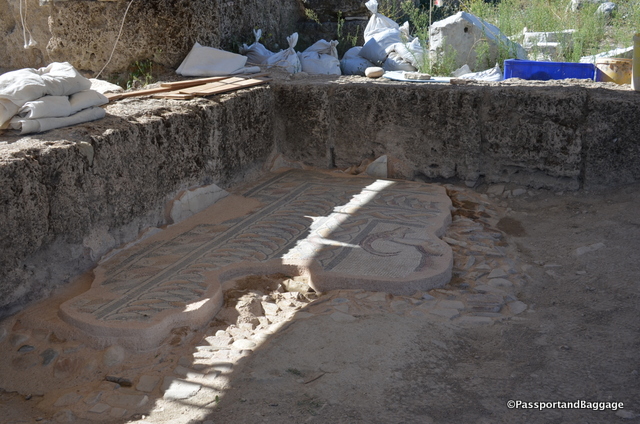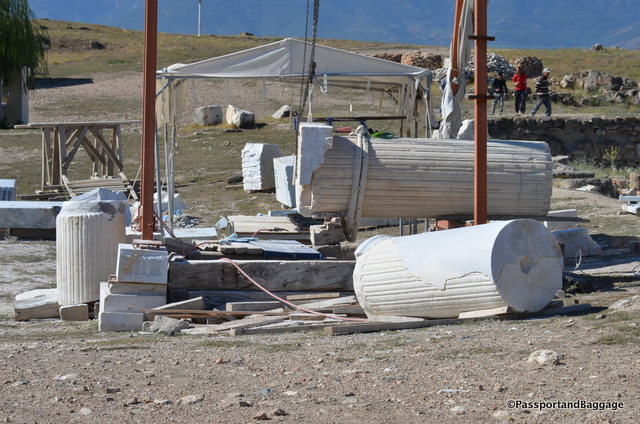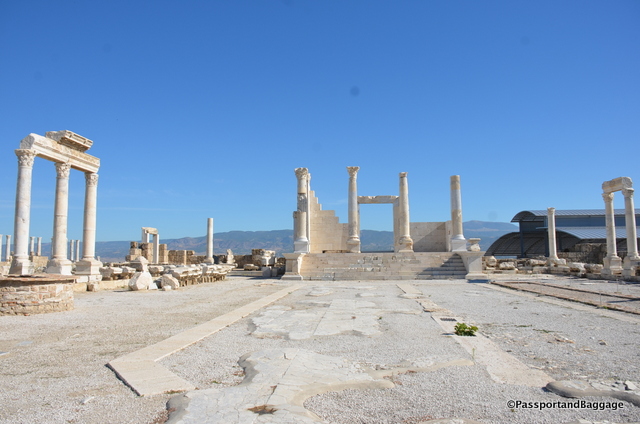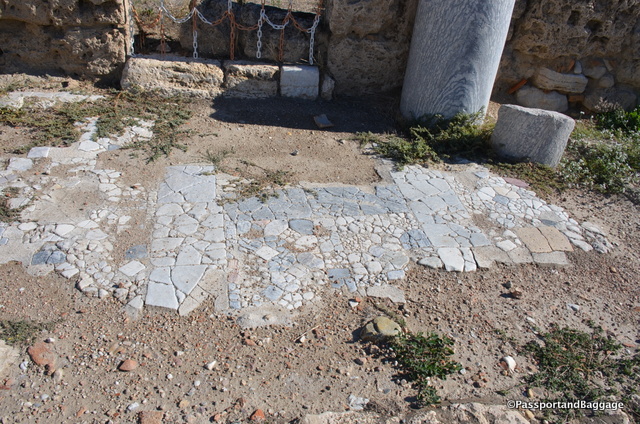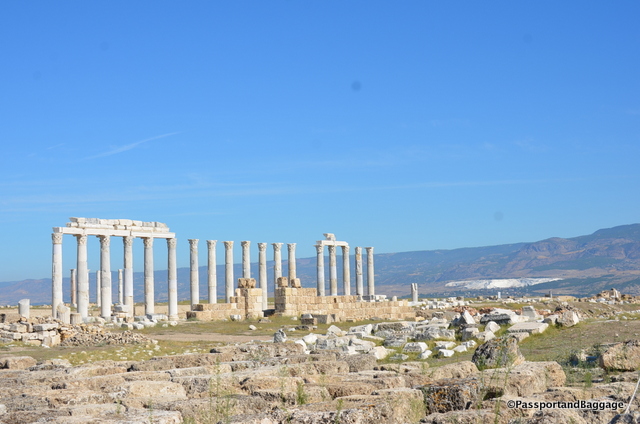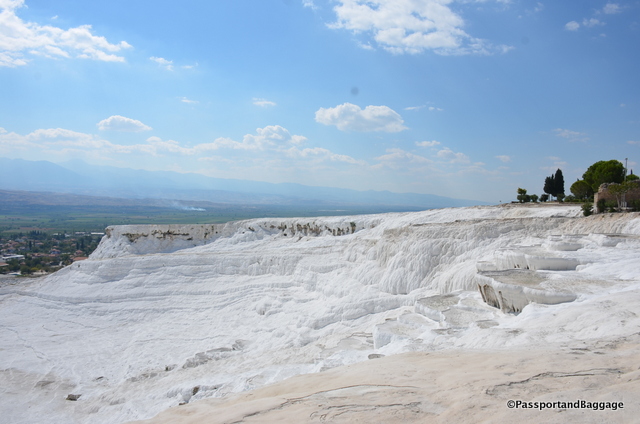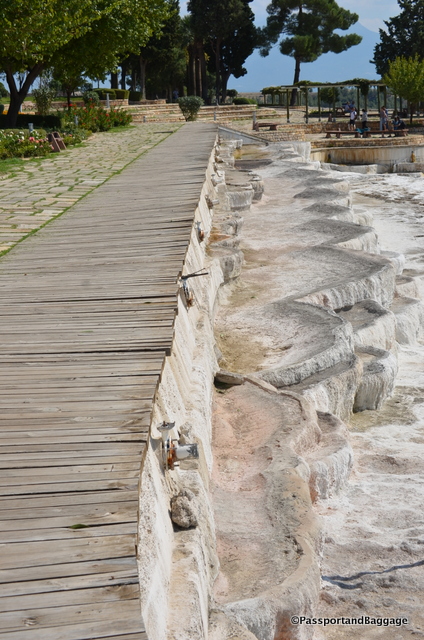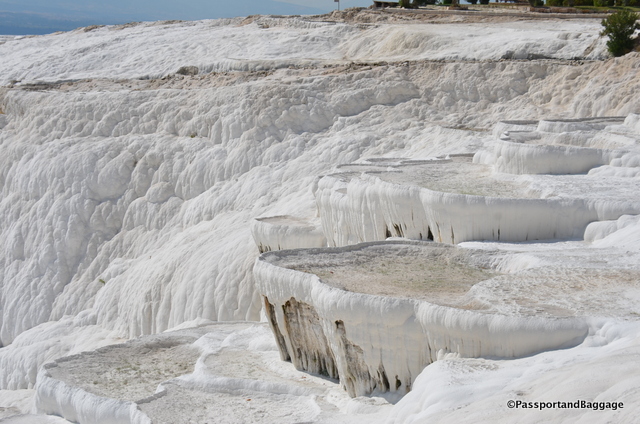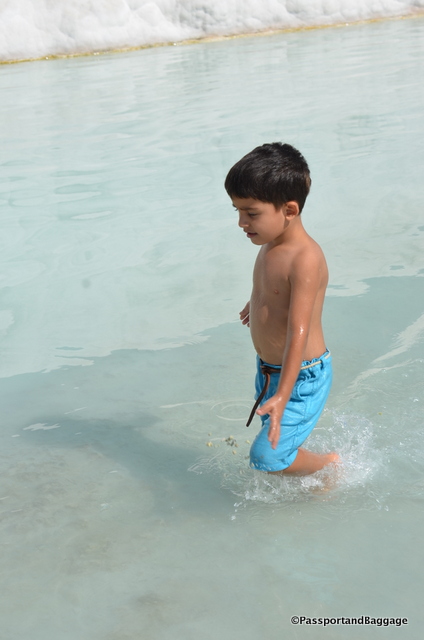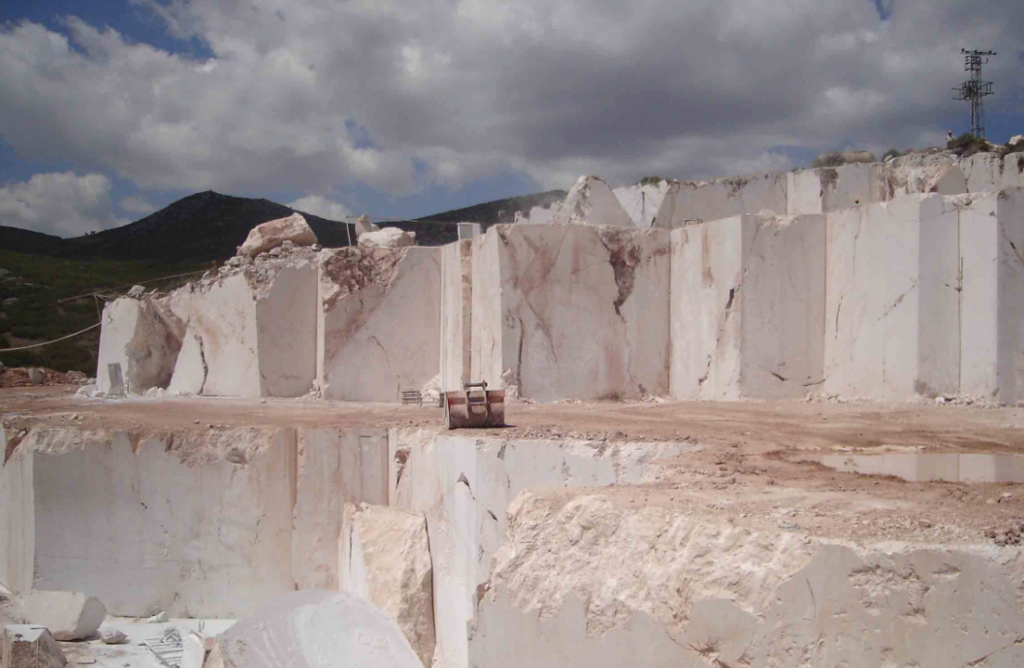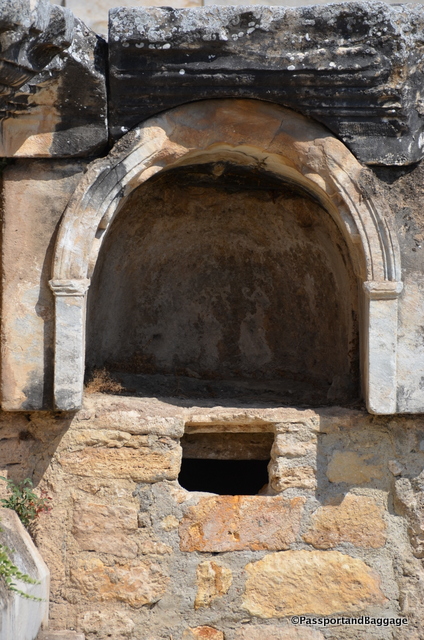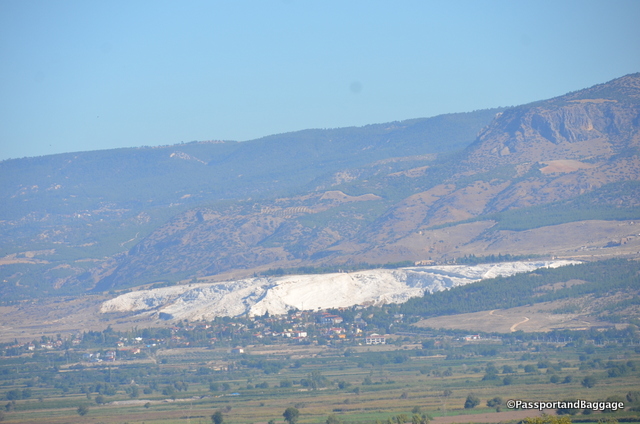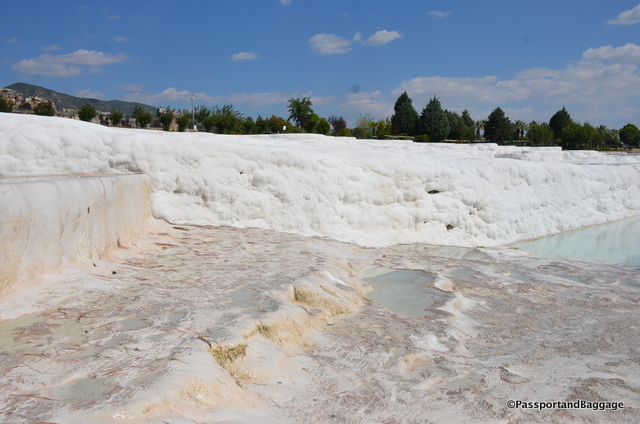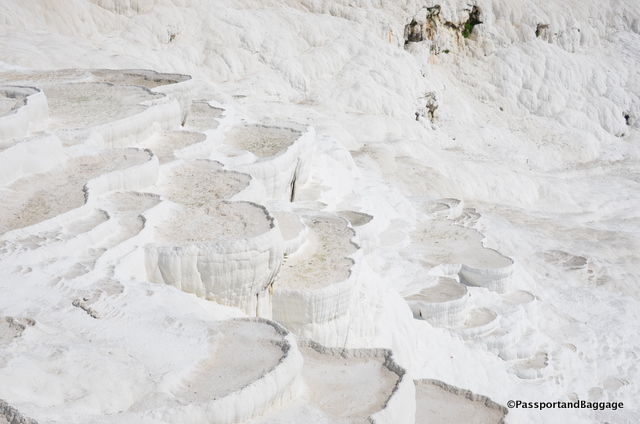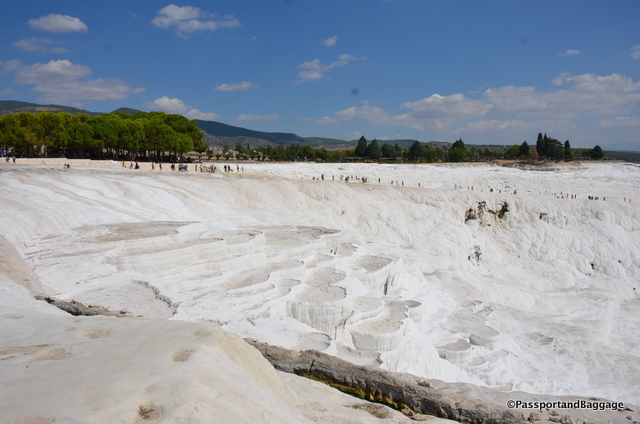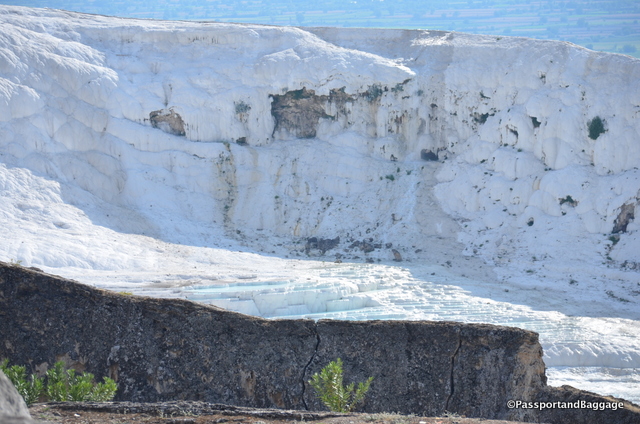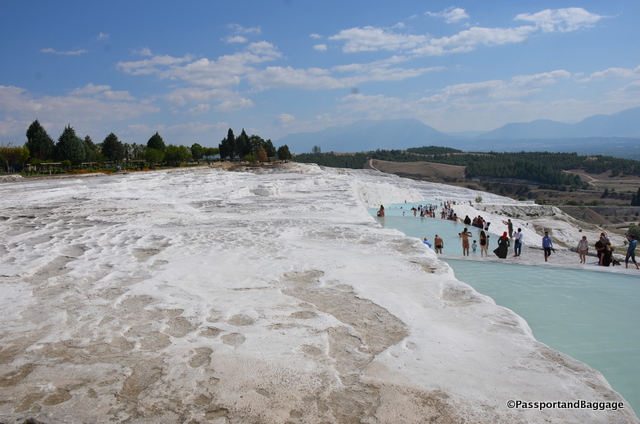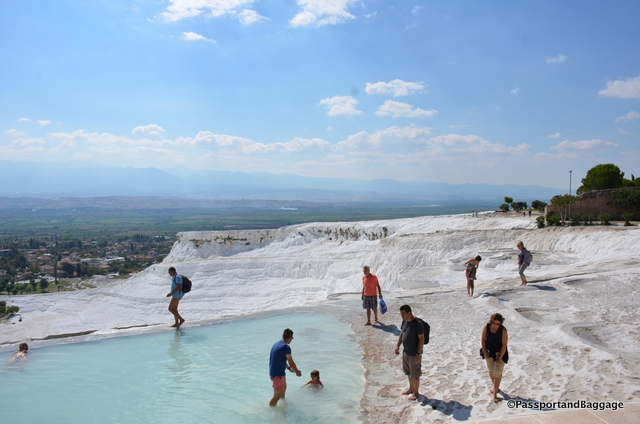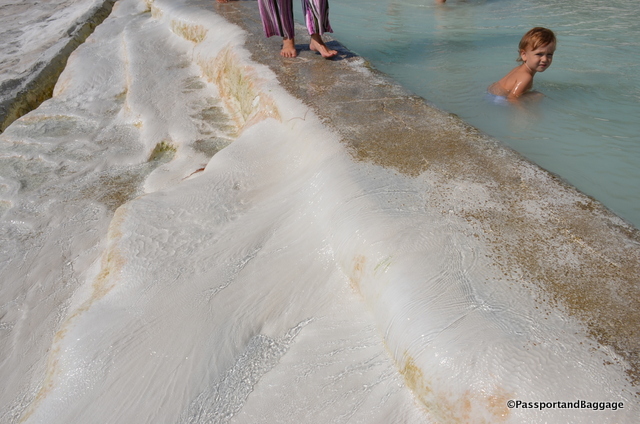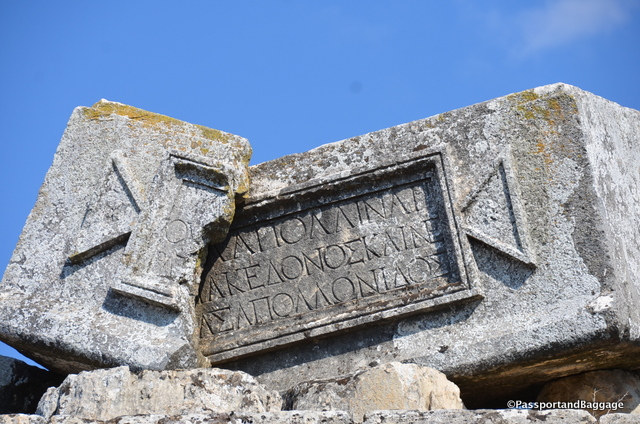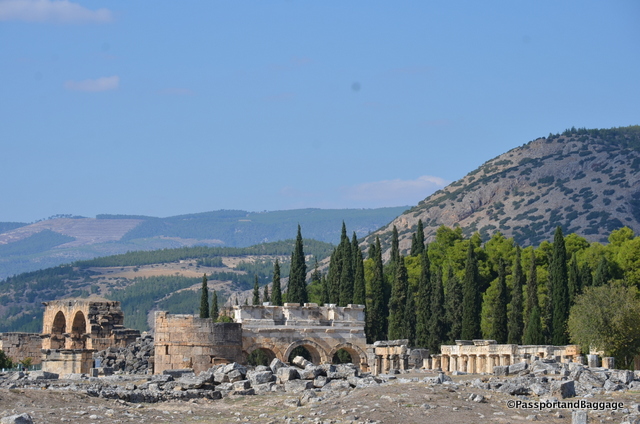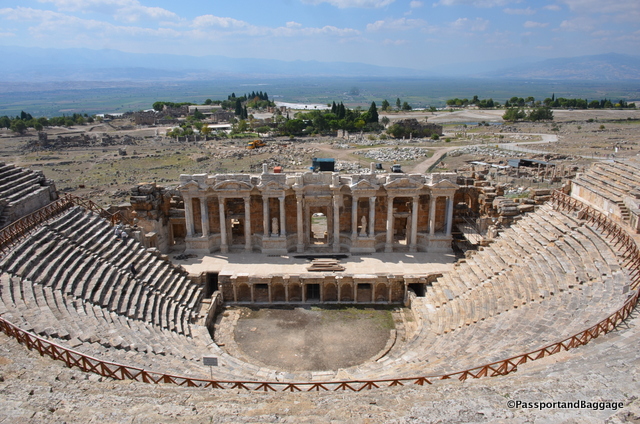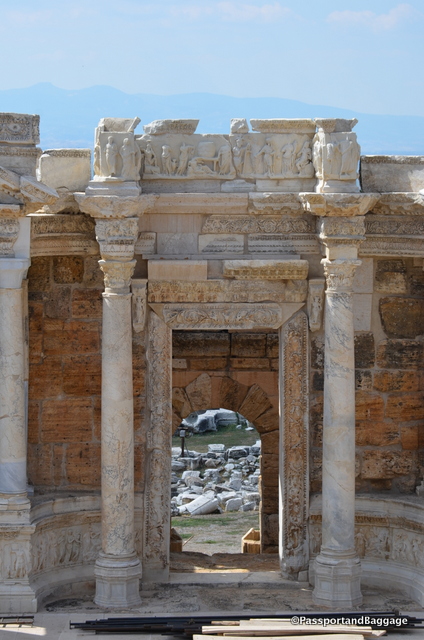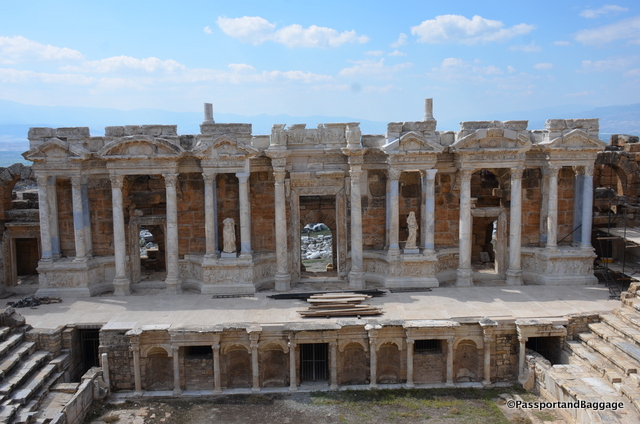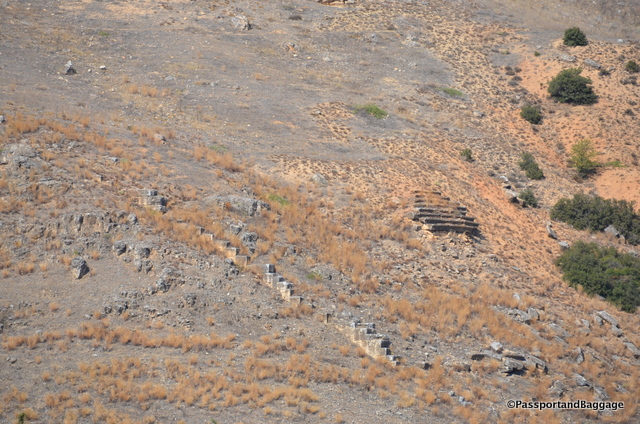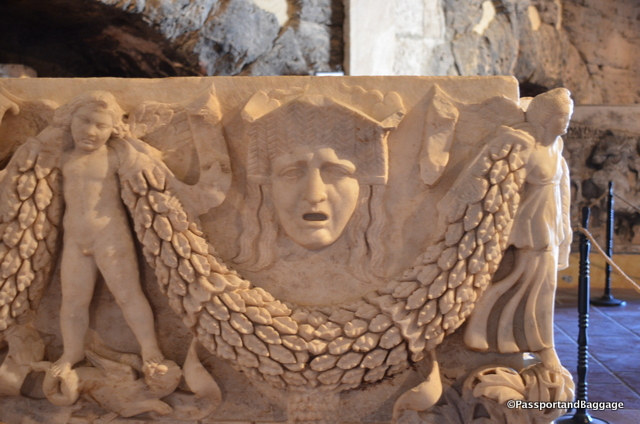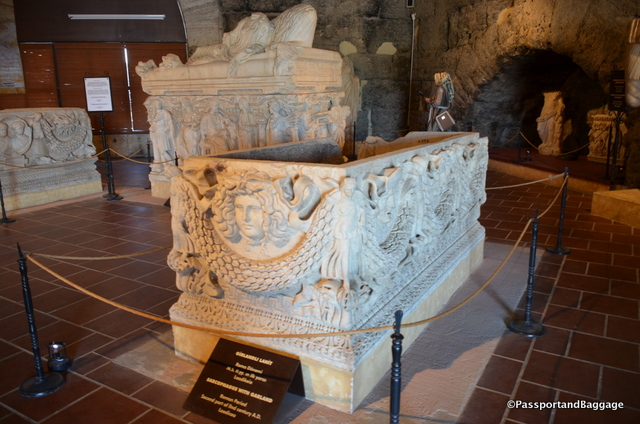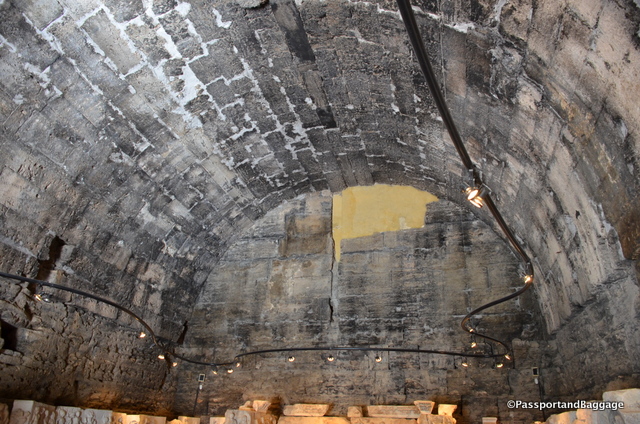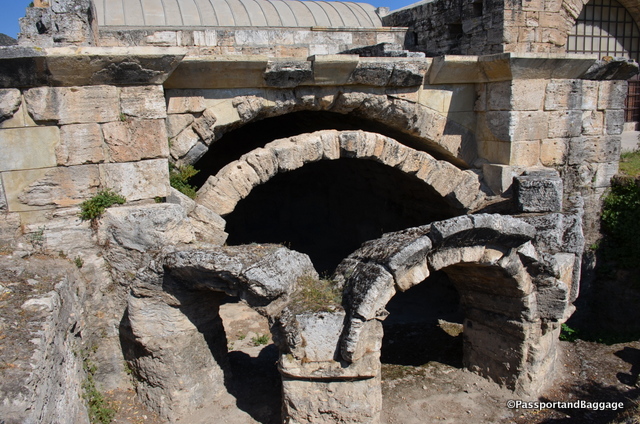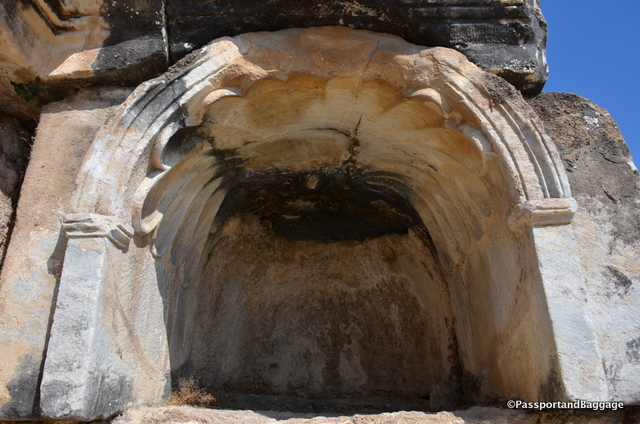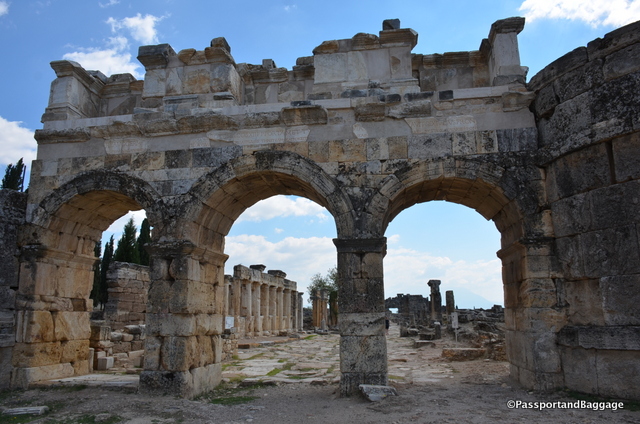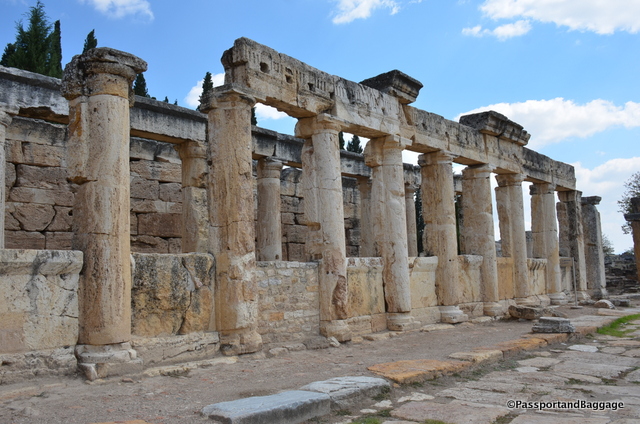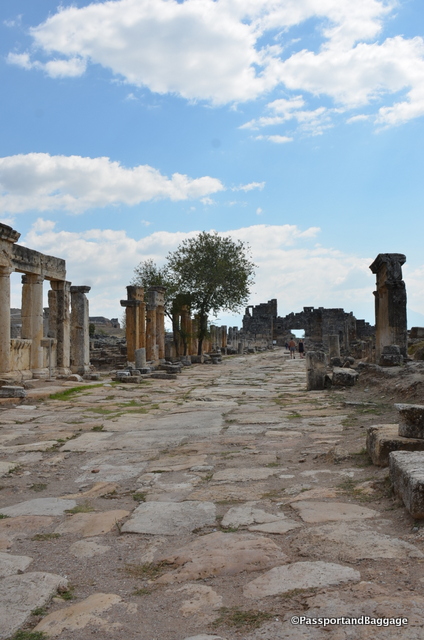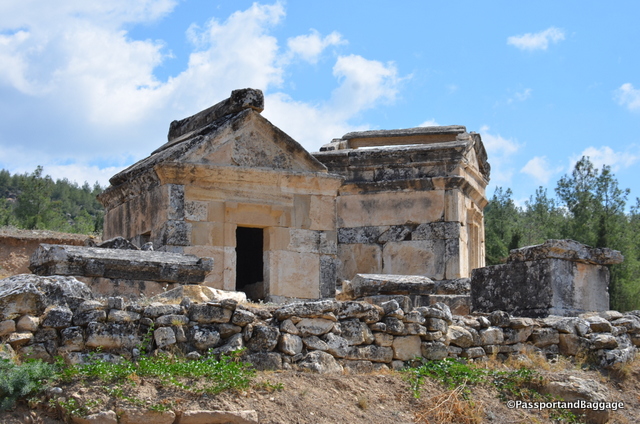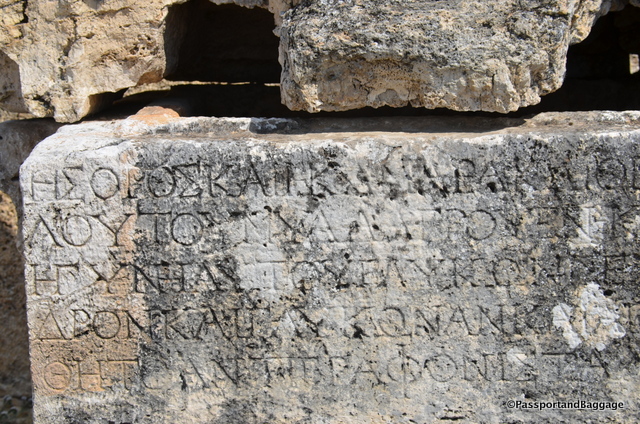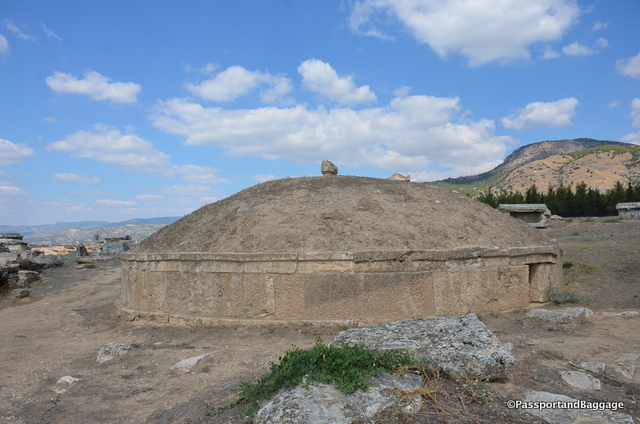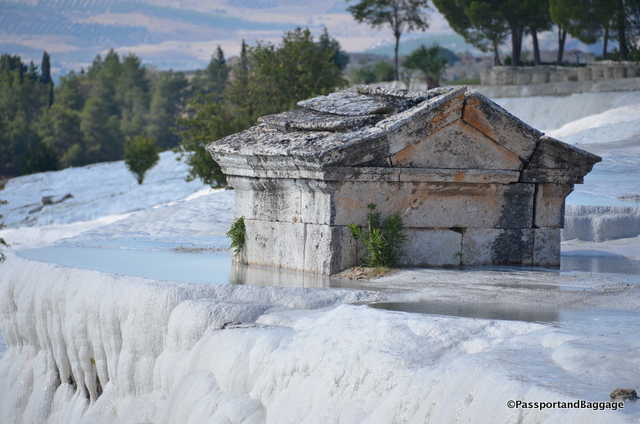I chose to stay in the town of Denizli for this leg of my trip. I cannot recommend my hotel, or the town for that matter, but I have not met anyone that can recommend a hotel or the town either. It is possible it would have been better to have stayed up the mountain in the town of Karahyit, but I am not sure that would have been an improvement.
Denizli is one hour from the airport and “25 minutes” from the sites I came to see. In this part of the country you make the best of what you can.
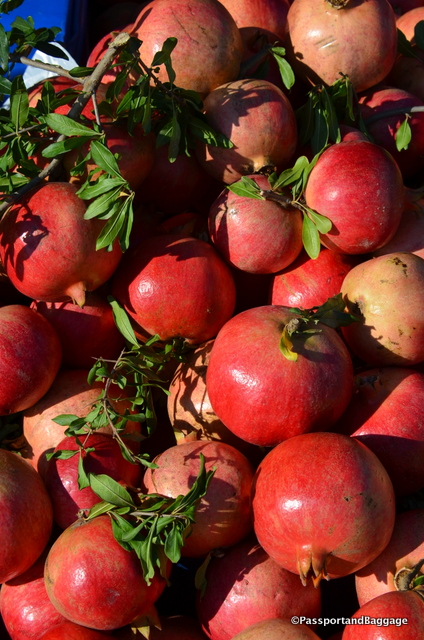
Everywhere in the valley pomegranates were ripening on the trees and found on the streets as fruit to purchase or fresh squeezed juice
I headed to bay 76 of the bus station in the town of Denizli, to catch the bus to Pamukkale and Hierapolis and that is where the adventure began. I am assuming that this entire thing would have been much easier if there were tourists, but keep in mind, there are no tourists in Turkey right now, they have been scared away by a) “the coup” and b) the bombings. So there is no reason to assume that the only woman on the bus dressed in western clothing with a giant camera around her neck wants to get off at the one tourist destination on the entire bus route, and there is also no way for this woman to have known that there are absolutely no signs at the stop she wants to get off on, and no one that speaks a word of English to tell her to get off, even though she was very explicit to the driver as to where she was going.
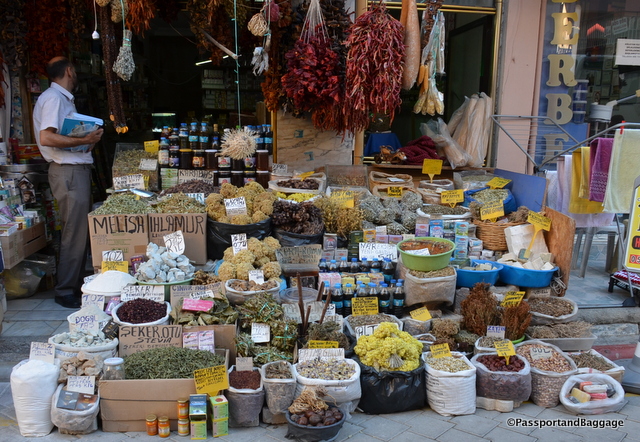
The town of Karahyit seems to be a gathering space for the countryside around it as the local market and center of society.
I do not blame the driver, I do not blame anyone, this is just life. My adventure begins when, after boarding the bus and ensuring that he understands I want to get off at Pamukkale, I sit back. We reach the end of the line and I ask Pamukkale? thinking I would get pointed where I am going. Instead, I got that look of, stupid tourist, this is Karahyit, your stop was 3 miles back, but not to worry, I will tell the next driver and he will take you back for free.
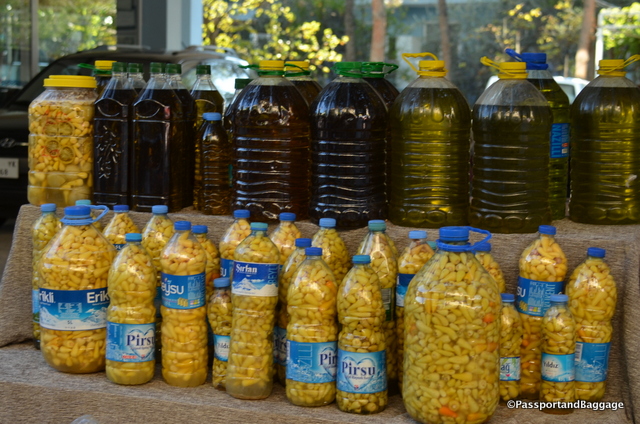
Beans soaking in oil and olive oil are a big seller on the main street.
The next driver arrives, yes I understand, no problem so I sit on the bus waiting for it to depart. By now I have figured out where I should have gotten off and stand as he drives right past it at 60 miles an hour. I tap him on the shoulder, he does the universal slap on the head, I am so stupid, I am so sorry look and takes me to the next stop, drops me off and says, driver will come, no charge.
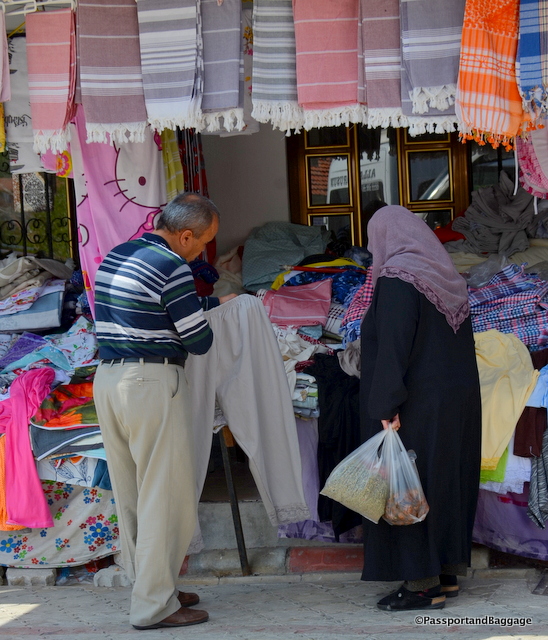
A husband and wife discussing the merits of bloomers
In the interim, he has me wait in the van of a somewhat questionable character that is chain smoking. The next bus comes, and he says no problem, one stop away. THAT is when I realize, stupid me, I had left my purse on the chain smokers bus. Now remember, no one speaks English and Turkish is, sadly, one of those languages I have yet to master even one word of. I grabbed the woman’s purse next to me and pointed backwards. The bus driver understood, got on the radio and all was saved.
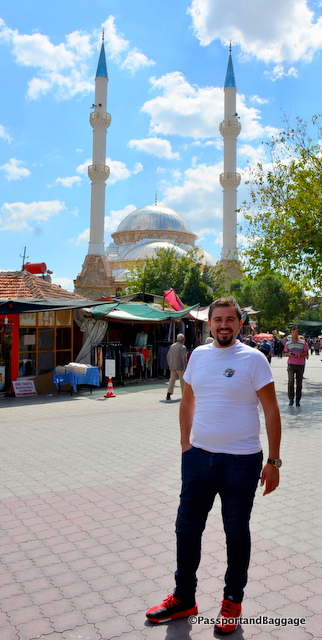
The kind bus driver that took care that my purse was returned and bought me tea while we waited for its delivery
This fine gentleman even bought me a cup of tea (çai) while we waited for the third bus, with my purse to arrive. The adventure only took 2 hours, and a handful of truly lovely and honest people that cared enough to help, and did it willingly, as far as I could tell.
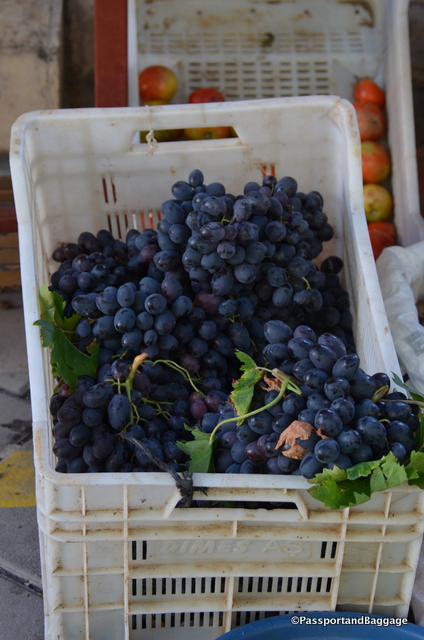
The fruit in the market was just fabulous
I wish I could explain the bus system. It seems so simple, one departs every 25 minutes from the train station and stops along the way until it arrives at Karahyit. Then it does the same in reverse. However, it isn’t quite that simple. I do not know if these buses are owned individually and then they pay a fee to the government or what, but the route is more of one a family van my take on a very, very busy school day. Everyone hops on and says where they want to go, and instinctively know how much to pay. Mom goes to pick up daughter at school. One rider was coming from hang gliding class 7 blocks off the main road. One woman needed to go see her father about 12 blocks off the main road in what appeared to be a completely different town, in the meantime it is social hour on the bus. The men sit in the front seat with the driver and talk non-stop, while the women sit in the back and talk non-stop. If it is full, people sit where they can or stand and hold on for dear life. I do wish I spoke some of the language to have enjoyed the gossip.
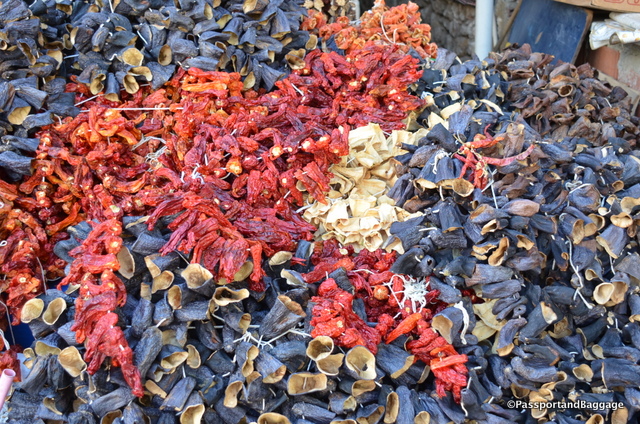
You can also buy anything dried, I assume for use in the winter
It also has a strange system of hierarchy. The bus that arrives then goes into a queue and how they chose who drives back down the mountain remains a mystery to me. They don’t sit in their van as though they are next, they park the van and take off, knowing a call will come on their cellular.
The bus is 4TL for the entire route, and I have no idea how much if you only go three blocks, but 4TL is $1.34 US, so this was the best entertainment ever for under $3.00.
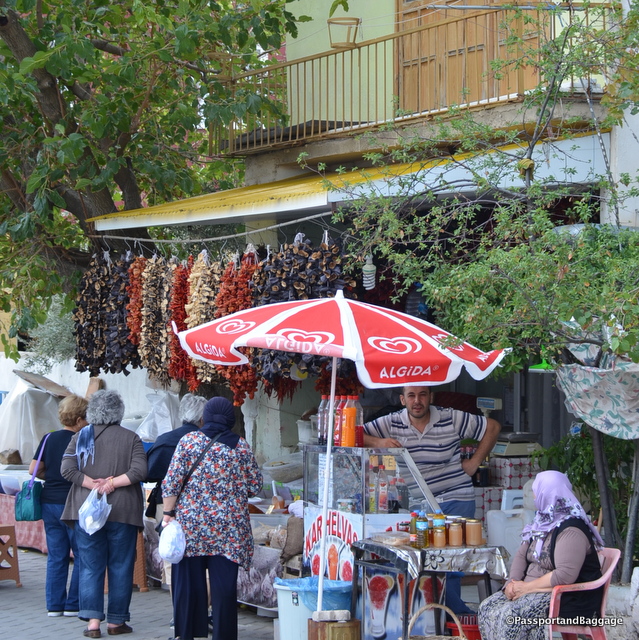
Walking the streets of Karahyit
The joy of Turkey, is that everything moves at its own pace, so I did not miss one thing I had set out to see that day, and got a lot of local color to boot.
This area is a large agricultural spot and a center for carpet production, as well as one of Turkey’s major textile towns, specializing in Aegean cotton. I don’t think they care if their hotels are good or not, or if tourists come to see the sites, they have better ways to make money.
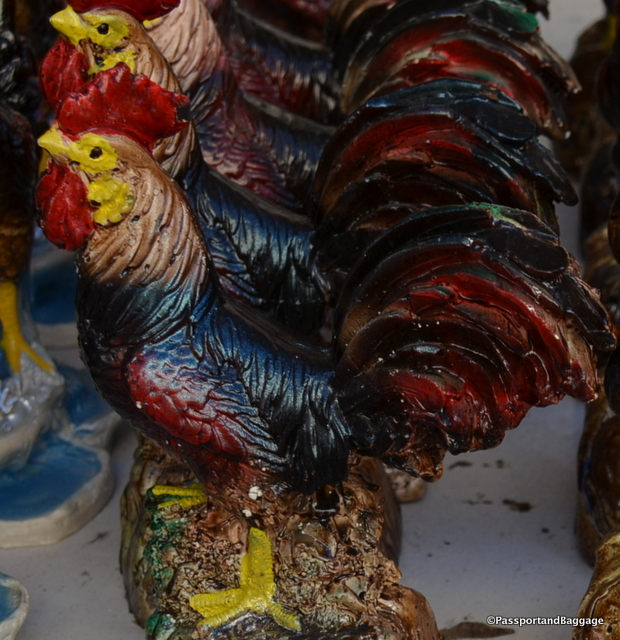
This is the Denizli Rooster, the symbol of the city founded in the 2nd Century AD. It is said that the sonorous crow of the rooster of Denizli accompanies visitors on their excursions around the city.
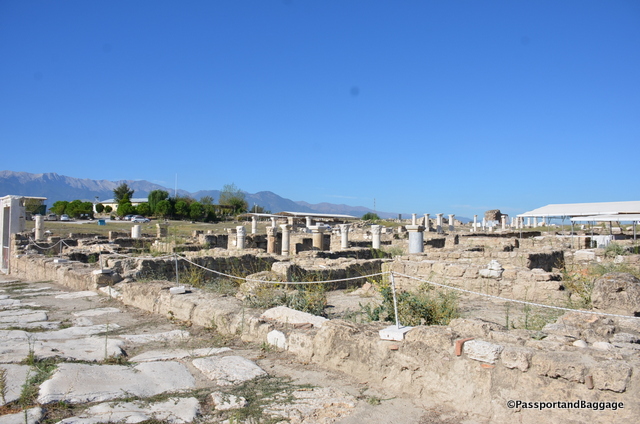 Just a short bus ride from Denizli is the ancient city of Laodicea. Established between 263 and 261 BC, the city was built on the river Lycus. It was located in the Hellenistic regions of Caria and Lydia, which later became the Roman Province of Phrygia Pacatiana.
Just a short bus ride from Denizli is the ancient city of Laodicea. Established between 263 and 261 BC, the city was built on the river Lycus. It was located in the Hellenistic regions of Caria and Lydia, which later became the Roman Province of Phrygia Pacatiana.